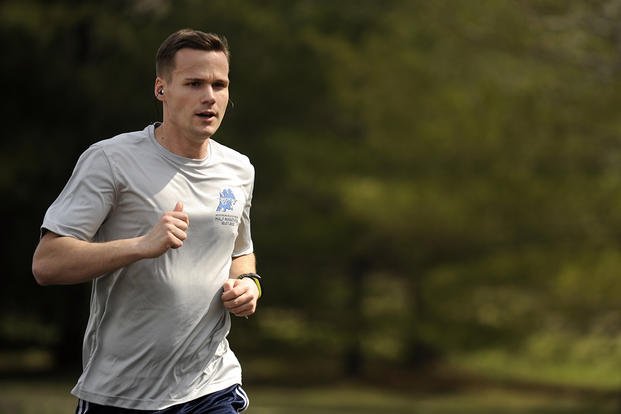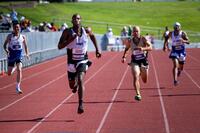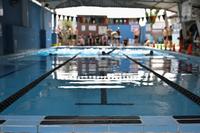As we age, overuse injuries tend to occur if a never-changing exercise routine is done for too long or if you start something new and do too much, too fast, too soon. This can also happen to us in our prime.
Whether it is high-mileage running, heavy weightlifting, high-repetition calisthenics or anything else for that matter, you have a high chance of injury if you do not change the routine frequently. Also, frequency, intensity and time doing workouts can play an equal part in properly training and overtraining you.
Here is what I have done now for nearly 20 years. It has enabled me to be without serious injury from training and keeps me in a condition where I can train with the younger generation in their teens and early 20s.
I use the sun as my indicator of tougher workout seasons, especially my running workouts. If the days are longer like in the spring and summer, then my workouts are longer. This form of periodization enables me to keep the gains from hard seasons of workouts well into the shorter days/shorter workout cycles. During the fall and winter months, I tend to taper a bit slowly from running and find more non-impact aerobics and add weight to my calisthenics program -- some heavy, some moderate.
In my "solstice plan," the workout cycle will bell-curve to a maximum during the longest day of the year on June 20 and will decrease slowly until the shortest day of the year on Dec. 20. Now, when the new year arrives and each day is getting longer, so do the workouts until they peak in June. And the cycle continues.

As you see, the easier part of the workout comes in the middle of winter, and the toughest part is in the summer. Winter workouts do not mean you do nothing; they are just easier in time commitment, mileage and repetition than the summer season. My book, "Maximum Fitness," is a 52-week workout that splits the cycle into four 13-week periods that include:
1st quarter -- calisthenics/cardio workouts
The goal of this cycle is to build a foundation of moderate to high reps of calisthenics or body-weight exercises to improve fitness testing scores. It's also to burn off some of the bulk you created during the winter weightlifting cycle. Progressing the running each week is critical to this cycle and will help prevent overuse running injuries when starting up again.
2nd quarter -- calisthenics/cardio workout (more advanced)
This phase takes the last cycle and builds upon it further with more maximum effort (high-rep/high-mileage cardio) workouts. At the end of this cycle, you typically will reach a peak in cardiovascular and body-weight performance. At this point, you will be ready for a change.
3rd quarter -- some calisthenics/some weights/cardio workouts
So you change your routine a bit. Decrease reps of calisthenics, but add weights incrementally each week to build up your strength. Cardio options grow by adding more non-impact to your running routine as you taper a bit to prepare for the weight cycle.
4th quarter -- near 100% weights/less running/more non-impact cardio
As a former football player and power lifter, I always have enjoyed this cycle and found that within 4-8 weeks, I was back to old max weight (1RM) in several exercises (bench press, power clean and deadlifts). Weight gain usually will accompany this cycle, and typical results are 10-15 pounds, especially if you like to watch football and eat. The legs will feel good on occasional runs after a few weeks of tapering down to more non-impact cardio.
When you push your fitness to extremes the way many military people have throughout their teens, 20s, 30s and now 40s, you need to create a break from all the elements of the above routine. Periodization is required to achieve that level of longevity. The four-quarter cycle above is a sample model of a periodized program. You can create your own to fit your fitness goals.
When I was in the SEAL teams, we actually did this type of program as winter diving always was tough without extra bulk. So we bulked up over the winter to handle the colder water temperatures. So this style of training performs a very useful purpose tactically as well as physiologically.
Stew Smith is a former Navy SEAL and fitness author certified as a Strength and Conditioning Specialist (CSCS) with the National Strength and Conditioning Association. Visit his Fitness eBook store if you’re looking to start a workout program to create a healthy lifestyle. Send your fitness questions to stew@stewsmith.com.
Want to Learn More About Military Life?
Whether you're thinking of joining the military, looking for fitness and basic training tips, or keeping up with military life and benefits, Military.com has you covered. Subscribe to Military.com to have military news, updates and resources delivered directly to your inbox.


















